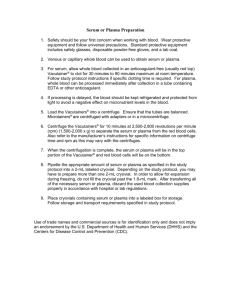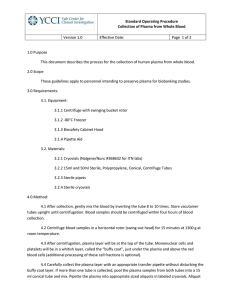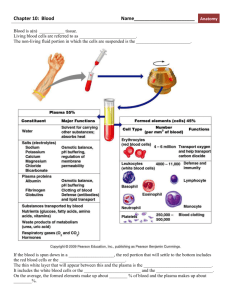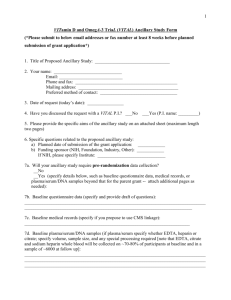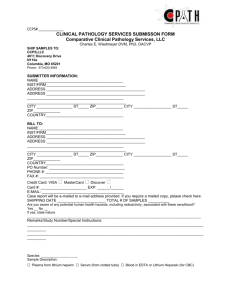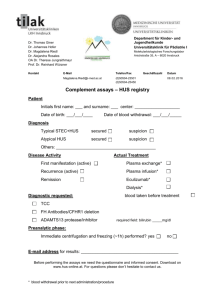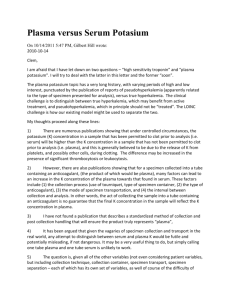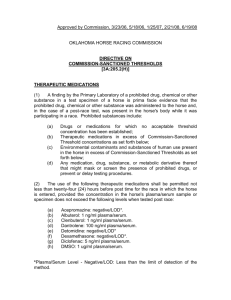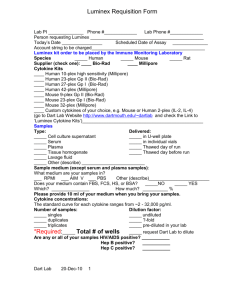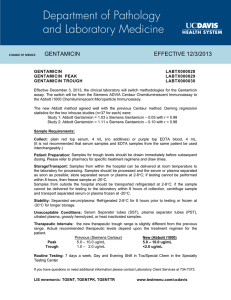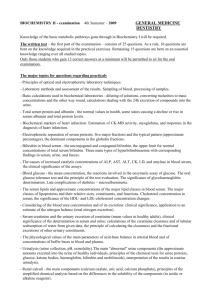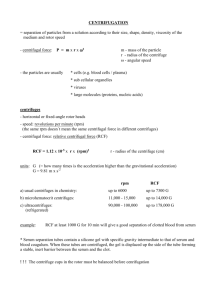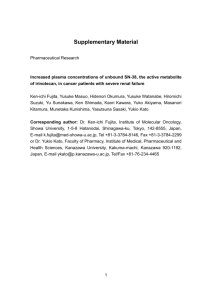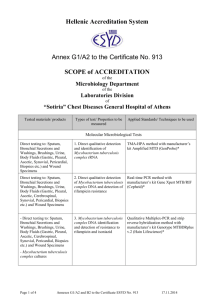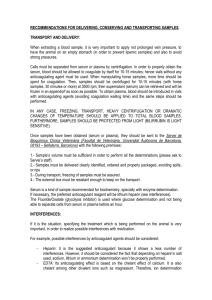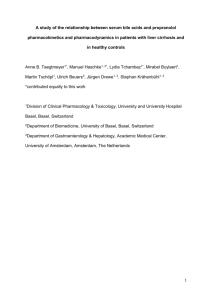Serum & Plasma Preparation Information
advertisement
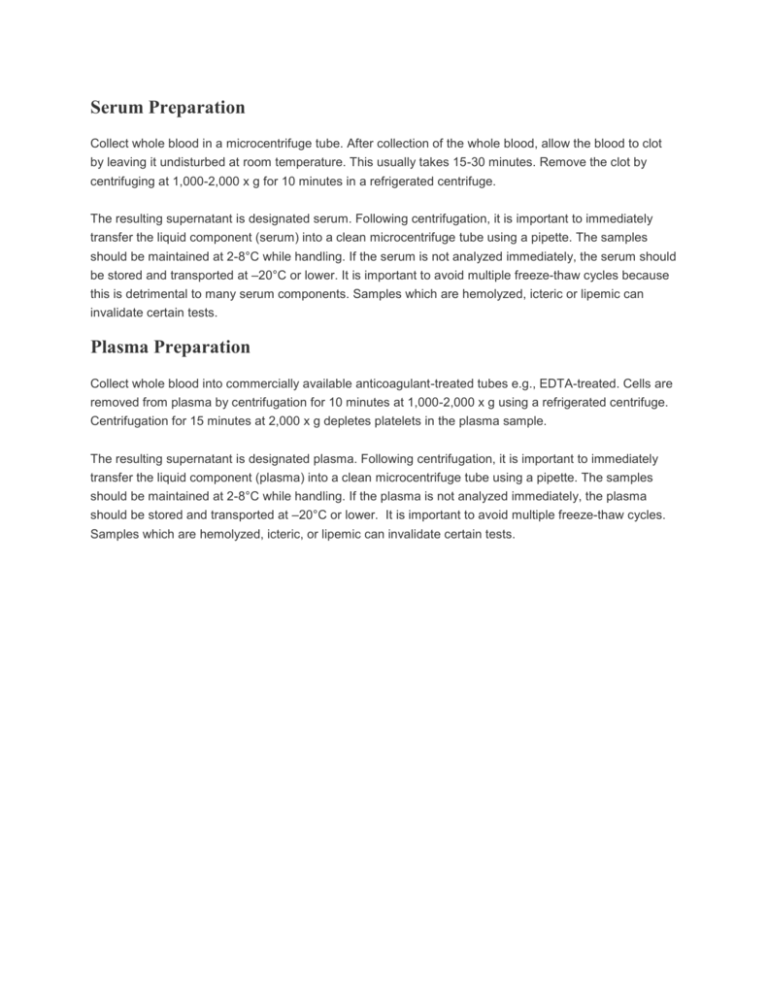
Serum Preparation Collect whole blood in a microcentrifuge tube. After collection of the whole blood, allow the blood to clot by leaving it undisturbed at room temperature. This usually takes 15-30 minutes. Remove the clot by centrifuging at 1,000-2,000 x g for 10 minutes in a refrigerated centrifuge. The resulting supernatant is designated serum. Following centrifugation, it is important to immediately transfer the liquid component (serum) into a clean microcentrifuge tube using a pipette. The samples should be maintained at 2-8°C while handling. If the serum is not analyzed immediately, the serum should be stored and transported at –20°C or lower. It is important to avoid multiple freeze-thaw cycles because this is detrimental to many serum components. Samples which are hemolyzed, icteric or lipemic can invalidate certain tests. Plasma Preparation Collect whole blood into commercially available anticoagulant-treated tubes e.g., EDTA-treated. Cells are removed from plasma by centrifugation for 10 minutes at 1,000-2,000 x g using a refrigerated centrifuge. Centrifugation for 15 minutes at 2,000 x g depletes platelets in the plasma sample. The resulting supernatant is designated plasma. Following centrifugation, it is important to immediately transfer the liquid component (plasma) into a clean microcentrifuge tube using a pipette. The samples should be maintained at 2-8°C while handling. If the plasma is not analyzed immediately, the plasma should be stored and transported at –20°C or lower. It is important to avoid multiple freeze-thaw cycles. Samples which are hemolyzed, icteric, or lipemic can invalidate certain tests.
